| August 31-Sept 4: Electrophysiology of the Heart, Hexaxial Reference System, R Wave Transition, Mean QRS Axis Interpretation OBJECTIVES: REVIEW FROM LAST WEEK: Be able to explain in detail the depolarization and repolarization timeline of a contractile cell in the heart (Click Here to go to last week's link if wish to review) Be able to discuss how Einthoven proposed the center of the heart, in the frontal plane (standard limb and augument limb) is the AV node Be able to describe how the limb leads (standard and augmented), depict a picture on the EKG, with an interpretation every 30 degrees in the Frontal Plane Be able to draw and label the Hexaxial Reference System with the standard and augmented limb leads Be able to identify and classify an Early, Normal and Late R Wave Transition Be able to identify and classify the Mean QRS Axis Class, it will help you if you download the EXAM FIRST, and answer questions as you work through the YOUTUBE lectures. Click Here to Download Exam 1 Part C due Friday Sept 4 by 12 Midnight Note to Class: There are 4 Youtube Videos with this Week (see below): Please watch this Youtube video below where we discuss the electrophysiology of the standard and augmented limb leads going through the AV Node Click here for the Electrophysiology Lecture YOUTUBE video |
||||||||
| Hexaxial Reference System | ||||||||
| Click here for the Hexaxial Reference System Lecture YOUTUBE video. | ||||||||
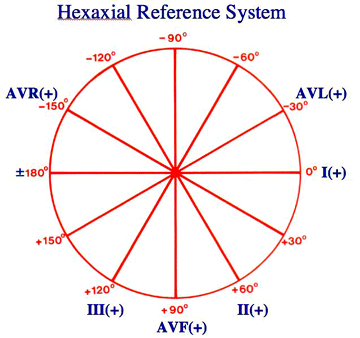 |
||||||||
| Class, please always show the PLUS and MINUS signs on the hexaxial reference system and note with 180 you show PLUS/MINUS and 0 degrees has no plus or minus sign. Next, please note we always show the LIMB LEADs at their POSITIVE pole and show this on the hexaxial diagram.. |
||||||||
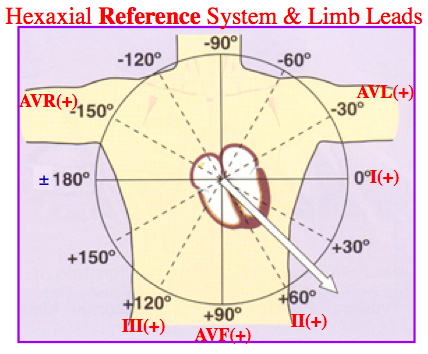 |
||||||||
| R Wave Transition in the Precordial Leads | ||||||||
| Click here for a YOUTUBE video Explaining the R wave Transition Interpretation |
||||||||
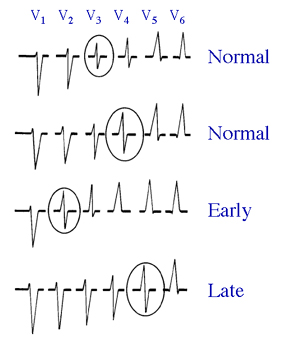 |
||||||||
| Determine which is the most BIPHASIC LEAD (equal distance of R and S wave) of the PRECORDIAL LEADS (V1, V2, V3, V4, V5, V6) | ||||||||
| 1) Identify the R Wave Transition Lead (most equal distant biphasic of R wave to S wave) | ||||||||
| 2) Classify as either Normal, Early or Late | ||||||||
| 3) Question: What is V1 is the transition lead? How would you classify? Answer is EARLY | ||||||||
| 4) Question: What is V6 is the transition lead? How would you classify? Answer is LATE | ||||||||
| Example Below: V4 is the most equal distant so it is the R Wave Transition Lead: Classification is Normal | ||||||||
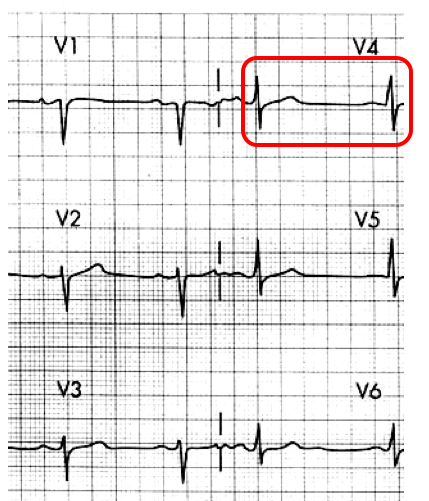 |
||||||||
| Mean QRS Axis Interpretation | ||||||||
| I suggest you download the Exam 1 Part C exam (if you haven't already) and work through these interpretations with me on the YOUTUBE video. |
||||||||
| Click here for the Part 1 YOUTUBE video Introducing the Mean QRS Axis Interpretation Electrophysiology |
||||||||
| Click here for the Part 2 YOUTUBE video Explaining the Mean QRS Axis Interpretation |
||||||||
| Mean QRS Axis Classifications | ||||||||
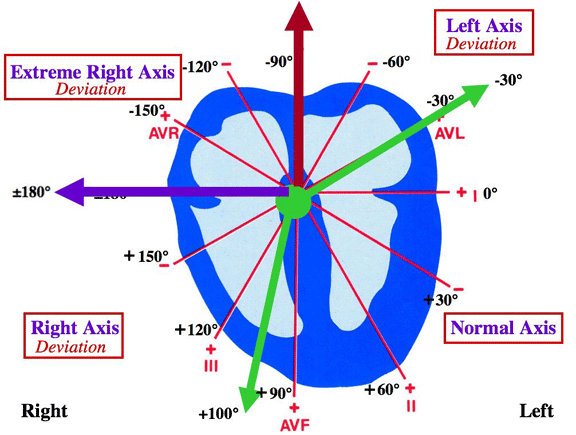 |
||||||||
| Normal Axis: from -30 degrees to +100 degrees | ||||||||
| Right Axis Deviation: from +100 degrees to ± 180 degrees | ||||||||
| Extreme Right Axis Deviation: from ±180 degrees to -90 degrees | ||||||||
| Left Axis Deviation: from -90 degrees to -30 degrees | ||||||||
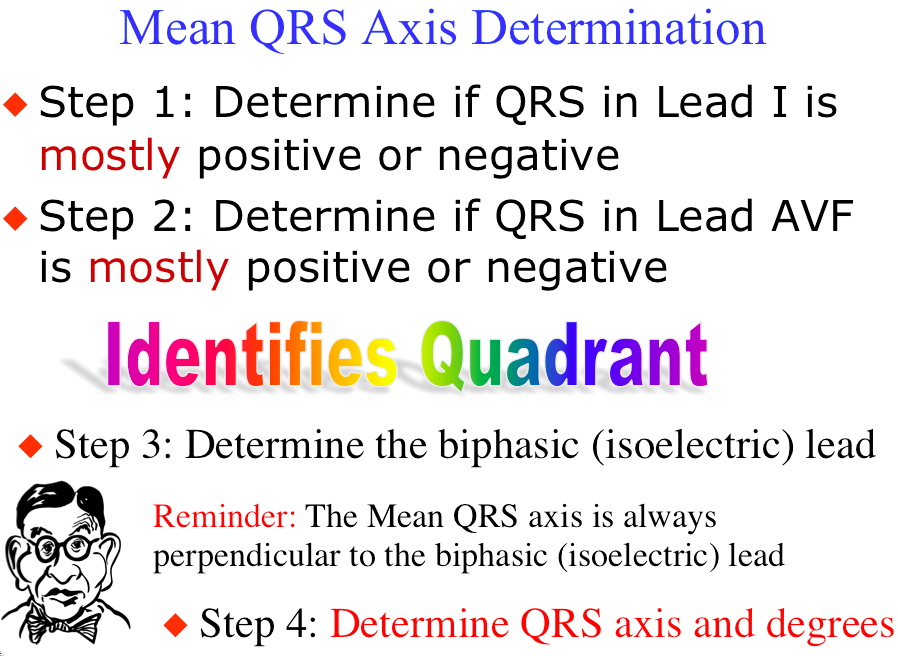 |
||||||||
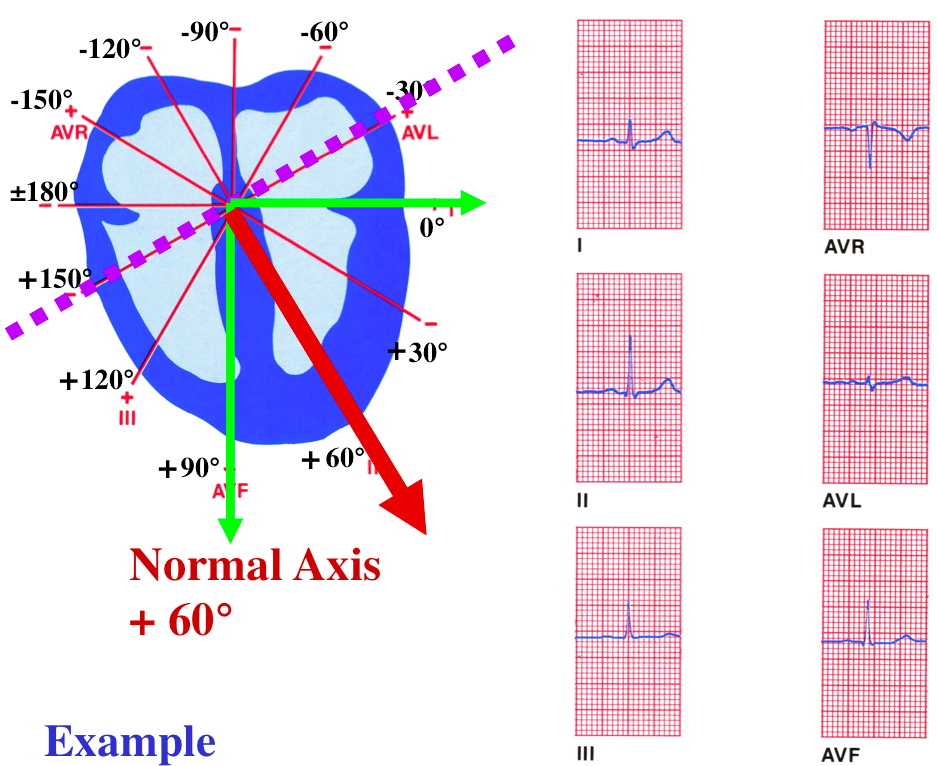 |
||||||||
| STEP 1: Is the QRS in Lead I mostly positive or negative? POSITIVE | ||||||||
| STEP 2: Is the QRS in AVF mostly positive or negative? POSITIVE | ||||||||
| STEP 3: Which lead is the biphasic lead closest to isoelectric. AVL | ||||||||
| REMINDER: THE MEAN QRS AXIS IS ALWAYS PERPENTICULAR TO THE BIPHASIC LEAD. AND, STEP 1 AND STEP 2 HAVE IDENTIFIED THE QUADRANT OF THE MEAN QRS | ||||||||
| STEP 4: Determine QRS Axis and degrees? Normal Axis +60 Degrees | ||||||||
| Exam 1 Part C: Click here to get questions: Exam 1 Part C is due by 12midnight on Sept 4. No late papers accepted. |
||||||||
|